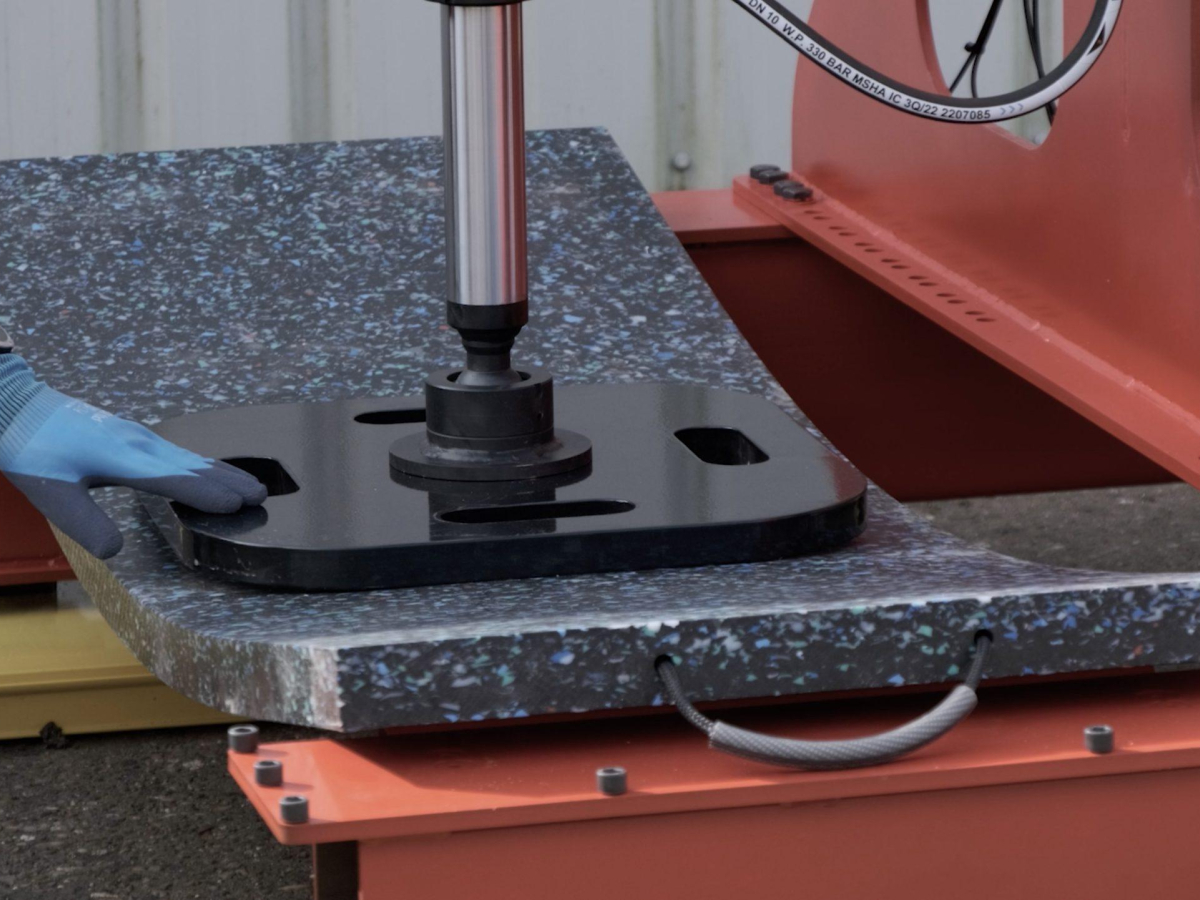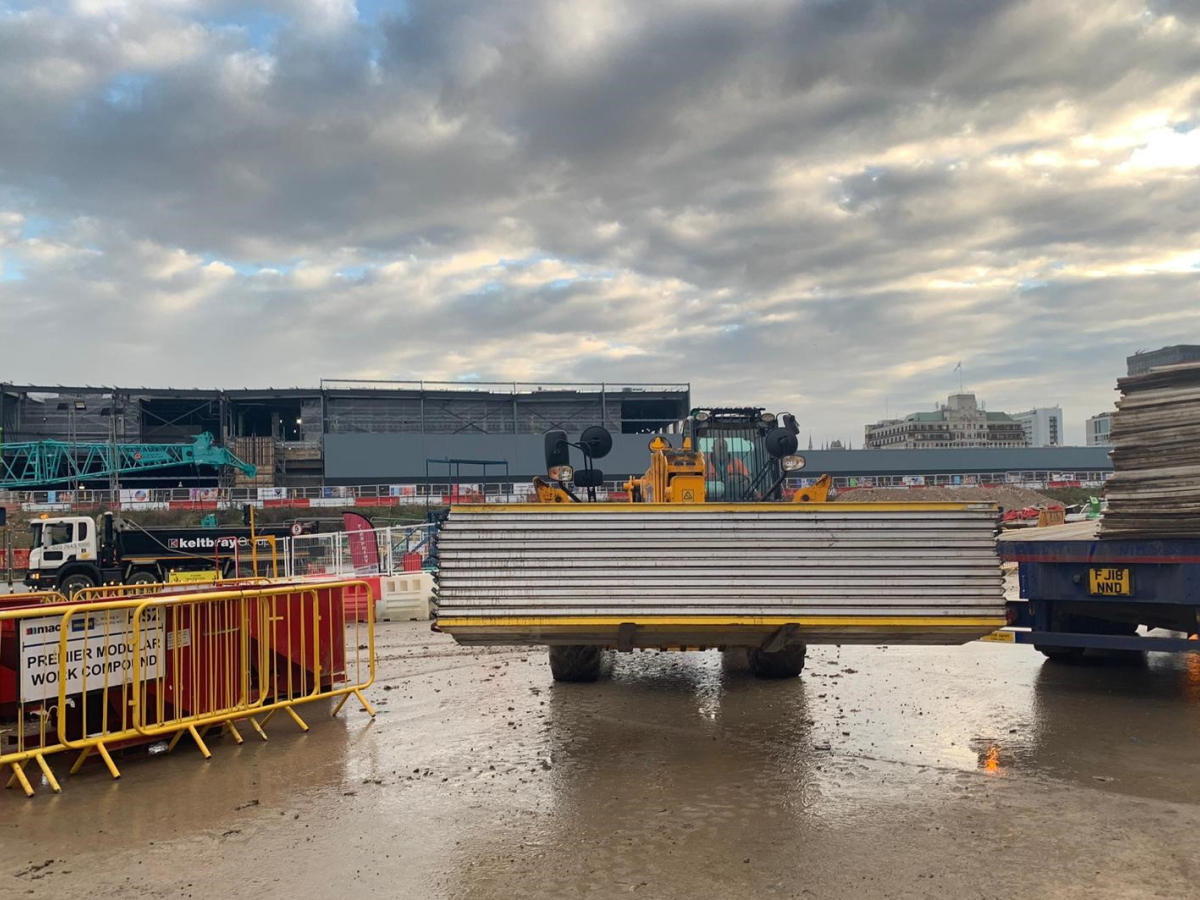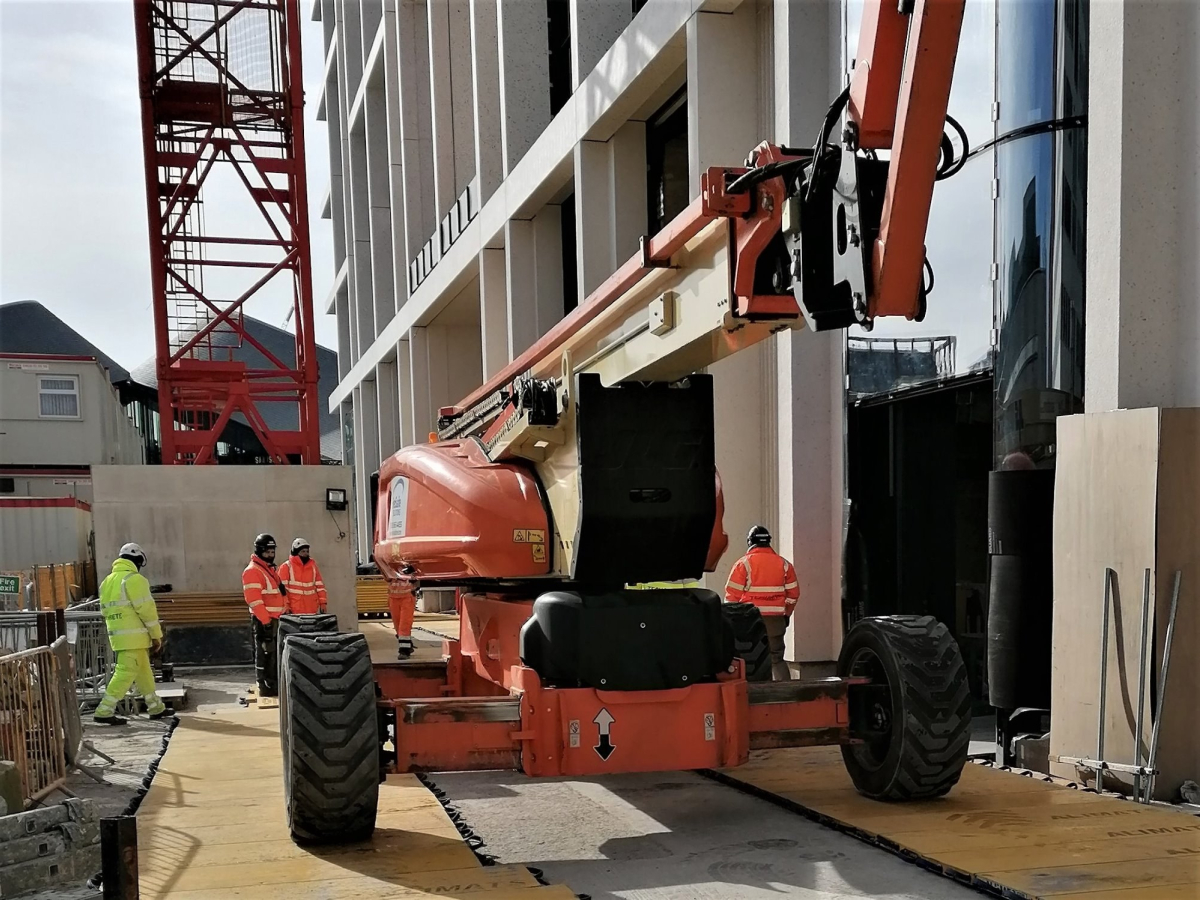As you can see from the videos, all three bending tests show significant deflection with the plastic system having reached their elastic limit in all cases. The tests are actually simulating very small loads when you consider typical outrigger loads from mobile cranes, which is even more alarming. From the deflection recorded, the only assumption that can be concluded is that in normal conditions the load simply triangulates through plastic mats. This is also indicated from the gap that appears between the 30mm thick steel plate and the plastic mat during the tests.
This highlights some of the questionable claims made about plastic systems. We don’t dispute the compression properties of plastic mats, but how can they be spreading loads with such poor and inadequate stiffness properties?
What are crane mats manufactured from
Crane mats are made from steel, aluminium, nylon, polyethylene and timber – and they all have high compressive strength. But not all crane mats are stiff – and that matters a lot.
We sometimes use the analogy of a beam or bridge to describe the function of crane outrigger mats. With a rope bridge, it’s probably fair to say it’s strong, but it isn’t stiff. A road bridge on the other hand is strong and stiff, which is why vehicles can safely drive across it. In some respects, outrigger mats are similar to a road bridge in the properties needed for them to perform.
There also appears to be a misconception in the industry when doing lifts on concrete or tarmac that crane mats aren’t necessary because it’s a hard surface. But for an engineer and their Temporary Works Design, they may have to determine what sits below this layer, which could be very soft ground. That’s why crane spreader mats have to be stiff. The tarmac may be solid for the first 3-inches or so, but what lies underneath – a pipe network, landfill or soft peat? What drives a Temporary Works Design may not always be obvious, and this is why they should always be followed. Prior research or site surveys may have already determined the requirement, so to assume the supporting ground is safe because it looks safe, is foolhardy. That’s why tough questions have to be asked and that the Temporary Works Design should always be respected.
On tarmac and concrete you will also want the intermediate compressible layer such as Ethafoam between the crane outriggers and the ground to help improve load distribution and lower ground bearing pressures. Again, without it, the load will triangulate straight through the mats, irrespective of the outrigger mat material.
What we’re really starting to see with enquiries coming from end users, main contractors, appointed persons and engineers is they’re asking specifically for the ALIMATS® system – they’re not asking for crane mats. This tells us the industry is firing up to ask more probing questions around what lies below the ground, the surrounding area and realistic SWL’s.
How are safe working loads calculated
We’ve recently completed more in-depth research into Safe Working Loads (SWL’s). Working alongside one of the industry’s most qualified and experienced external consulting engineers, we’ve finished first principal analysis enabling us to calculate and recommend SWL’s for:
- Each of our standard ALIMATS® configurations
- Bespoke ALIMATS® configurations
- Additional layers of ALIMATS® modules, or our new Half Loader module
This will allow us to quote realistic SWL’s to Temporary Works Engineers and Appointed Persons.
We also now have example calculations which showcase how we justify SWL’s. What we’ve learned is that engineers have different interpretations. There are design guides and recommendations on how this work should be followed, but we believe a lot of it is out of date.
What are the challenges with different crane mat materials
Plastic mats (HDPE or UHMW-PE) are not stiff enough to perform as crane outrigger mats. The supporting ground is doing the hard work by taking the load – not the mats. Plastic is stronger than timber, but timber is stiffer.
There are different arguments with timber systems. Bulky and heavy, they can only be moved about using machinery. Unless timber mats are new at the time of use, their structural properties can’t be known due to water absorption and repeatedly being used outdoors in all weathers.
Systems such as steel, are stiff and strong but like timber they are big and weighty, relying on equipment for positioning and manoeuvring.
Our own system has limitations – but this boils down to the size of the crane the mats are going under. Generally speaking, ALIMATS® sit comfortably under cranes up to 150 tonne. The entire interlocking range of aluminium mats from our mini to our extra-long, are light enough for two operatives to pick up by hand, position directly under the cranes outriggers and realign. Not all aluminium mats on the market are handleable – some competing systems are still too heavy to move by hand even when they are fitted with handles.
The ALIMATS® system at a glance
- Patented interlock – for improved structural performance.
- Made from recycled certified extruded aluminium – easy offloading and manoeuvring.
- Lightweight modules – no need for heavy plant and short rigging, saving time and money.
- Module sizes 0.33m² to 8.07m² – for various applications.
- Fully load tested and certified – temporary works engineers use our datasheet in their calcs.
- Maximum module weight 48kg – entire range easily deliverable to site on a small van.
- Available to buy – talk to us about painting them in your corporate colours.
If you’d like to trial ALIMATS® for your next load spread or load transfer project, please get in touch on 01355 345111 or email enquiries@brilliantideasltd.co.uk




